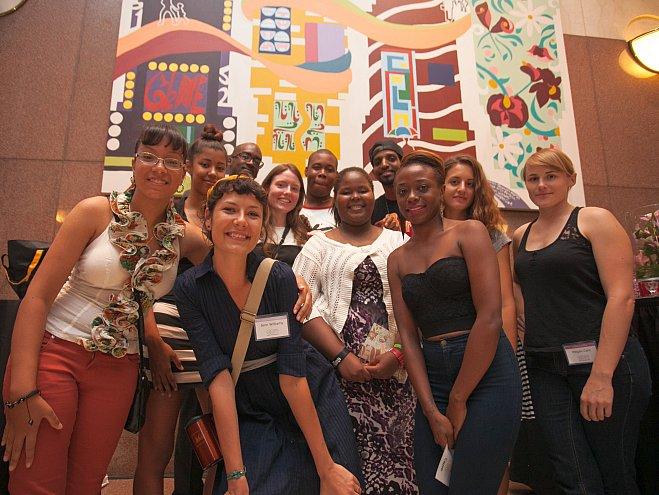NEW YORK—Four strange brown machines stand in the basement of building 787, the headquarters of AXA Financial on Seventh Avenue.
Helena Reyes, 18, from Harlem, was captivated by the machinery’s function as one of the most cutting edge, environmental air conditioning systems in the city.
“When I saw that, I thought we just had to put that in our art,” Reyes said at the closing ceremony of Creative Arts Workshop for Kids’ (CAW) summer program.
For 26 years, CAW has offered underesourced children around the city a chance to develop skills in public speaking and teamwork. The youth also learn through the public spaces they work on—like about the green air conditioning technology of the AXA Equitable building.
The system freezes ice over night, and melts it during the day to produce a cooling effect. Replacing the building’s outdated heating and air conditioning plant with the new technology reduces the building’s carbon emissions, equal to removing 220 cars from the road annually.
Reyes is one of 79 low-income youths hired by CAW this summer to design and create public art, particularly murals. Although the youth were paid, the nonprofit organization’s intention was not to find the most talented artists to paint the most exquisite murals, but to help young people find a healthy sense of purpose.
Some of these youth have been formally adjudicated or incarcerated, and most of them had never been engaged with anything artistic.






